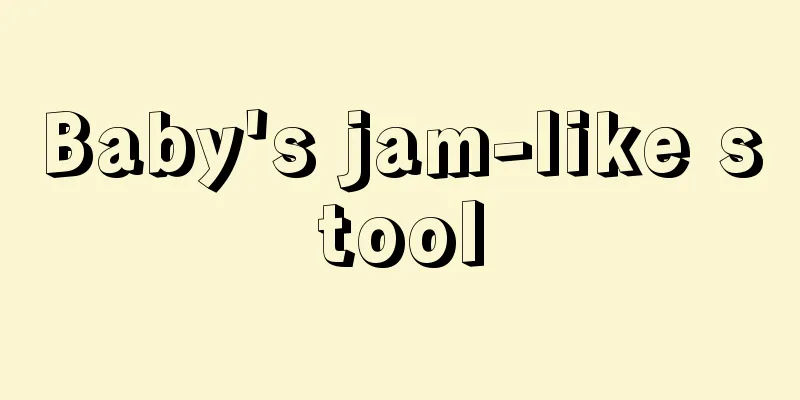When is the critical period for children's intellectual development?

|
As time goes by in daily life, children's bodies begin to develop in all aspects, especially their intellectual development. Parents can master the methods of teaching their children during the critical period of their children's intellectual development, so that their children can receive a better education and become smarter. The critical period of children's intellectual development is generally between 1-10 years old, or between 1-7 years old, and parents can grasp the period. Critical period of children's intellectual development (1) 0-1 years old is the critical period for babies to recognize sounds. One week after birth, the baby can recognize the voice of the mother who feeds him, and after 4 weeks, he begins to have the ability to distinguish different sounds. Training Methods: Bring your baby into contact with people around you more often to let him feel the characteristics and patterns of different sounds. After your baby wakes up and is in a good mental state, read poems to him, play music or sing to your baby often, talk to your baby, teach him the names of people or objects, etc. Parents can imitate the sounds of animals and encourage their babies to imitate the sounds. Take advantage of parent-child interactive games to let your baby distinguish sounds coming from different directions. Often take your baby outdoors to listen to various sounds in the surrounding environment, such as horns, dogs barking, cars, doorbells, etc., and explain these sounds to your baby one by one. (II) 2 years old is the critical period for the baby's motor development Training methods: From the time the baby is one month old, push the baby's feet with your hands to train him to crawl. When the baby is 3 months old, hang some toys above his crib so that the baby can grab them with both hands to exercise his hand-eye coordination. When the baby is 6-7 months old, create more opportunities for him to crawl, such as letting the baby lie on his stomach and put one or two toys in front of him to attract him to crawl forward and try to grab the toys to promote his motor development. (III) 3 years old is the critical period for the baby’s oral language development Training methods: (1) Encourage your baby to talk more and patiently correct any incomplete or inaccurate expressions. (2) Guide your baby to associate speech with specific things and people. After repeated training, your baby will be able to gain a preliminary understanding of the meaning of language. For example, when the baby says "Dad" or "Mom", he will turn his head towards Dad and Mom. (3) Ask your baby questions about various things encountered in life, such as asking the baby what color the leaves are while taking a walk, and asking the baby to answer, so as to improve the baby's language expression ability. (4) Guide the baby to pay attention to the mouth shape and voice of adults when they speak. The baby will begin to imitate the voice and actions of adults at this time. Parents should pay special attention to their own words and actions. At this time, the main thing is to train the baby's pronunciation, make his pronunciation as accurate as possible, and patiently correct some unclear words. (IV) 3-4 years old is the critical period for the development of baby's counting ability Training methods: (1) Design some interesting games to play with your baby, such as asking your baby to find numbers from number cards. (2) Use specific examples to teach your baby addition and subtraction. You can use props such as apples and building blocks to demonstrate. (3) Provide enough physical materials and let the baby find the connection between numbers by himself. (4) Make full use of various opportunities in daily life and count to your baby often, such as when playing with your baby or going up and down stairs. (5) Use different objects, such as fingers, building blocks, etc., to count with your baby to increase your baby’s sensory understanding of numbers. (6) Use vivid images to teach your baby to recognize number symbols, such as “1 looks like chopsticks, 2 looks like a duck, 3 looks like an ear”, etc. |
<<: Can sepsis in children be cured?
>>: Can babies drink water boiled with loquat leaves?
Recommend
Will the baby's skin peeling after being burned leave scars?
Accidents are often uncontrollable. Many parents ...
Back to school syndrome
For students who have to go to school, having a h...
What can children drink to grow taller?
A child's height starts to increase day by da...
How to apply for medical insurance card for children with non-local household registration
Due to the development of today's society, th...
What might be the cause of skin allergies in children?
Children's skin is very sensitive, and allerg...
What are the symptoms of testicular yolk sac cancer in children?
The age of onset of cancer is generally after mid...
Why does a child bite his tongue when sleeping?
It is common for children to be restless when sle...
What should I do if my child has a sore throat and a high fever?
It is especially easy to have a fever in the summ...
What to do if your newborn keeps crying
Many young parents who have a new baby in their f...
Pediatric asthma treatment
Cases of asthma in children have become common re...
How can children with spleen deficiency grow taller?
With the continuous development of society, child...
Why do children lose their hair?
Before a child is one month old, he or she may ex...
Why is the baby's belly bulging?
Some babies have bulging stomachs, which seriousl...
Early education for four-month-old babies
Early education refers to the early education of ...
What causes seizures in children?
Convulsions in children are a relatively common e...









